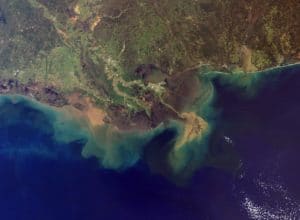
Voluntary efforts to reduce nutrient pollution aren’t working. For example, in the Mississippi River Basin, after 30 years of research, more than 15 years of assessments and goal-setting, and more than $30 Billion in federal conservation spending since 1995, there has been no decline in the average nitrogen levels since the 1980s.
After voluntary incentive-based approaches in the Chesapeake Bay area actually led to worsening nutrient pollution conditions, mandatory limits were established. In 2010 the states in the Chesapeake Bay Watershed asked the EPA to establish a “total maximum daily load” – a “pollution diet” under the Clean Water Act that limits amounts of nutrients and sediment flowing into the bay. The result was that between 2009 and 2015, loads of nitrogen, phosphorus and sediment in the bay dropped by 8 percent, 20 percent and 7 percent respectively. Additionally, both underwater grasses and the bay’s famous blue crabs are now beginning to recover.
Read more at: https://theconversation.com/nutrient-pollution-voluntary-steps-are-failing-to-shrink-algae-blooms-and-dead-zones-81249






